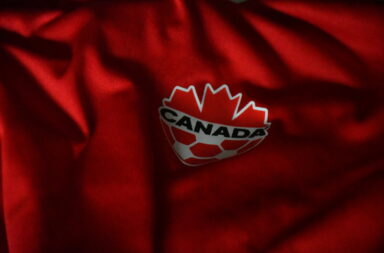William Albabish was running track in high school when he tore the tendons in both his ankles. “I had seen a couple surgeons and they all gave me different advice,” said Albabish. “That was my main reason for wanting to be a doctor.”
Now, Albabish has completed a master’s degree and is well on his way to obtaining a doctorate. One of the three projects he created as part of his PhD was creating virtual dissection aids to help teach students functional anatomy.
University of Guelph-Humber kinesiology students get to take dissection lab classes in Guelph starting in their first year, while University of Guelph students have to wait until third year. Dr. Lorraine Jadeski, director of Guelph’s human anatomy program, has seen how Albabish’s videos have impacted students.
“They love them and they want more, bottom line,” said Jadeski. “In the past, they’ve looked for these sorts of things online to help them study.”
However, the anatomy aids available online were low-quality and did not align with what students were learning. That’s largely what motivated Albabish’s project.
“In third year, a bunch of us would go watch these videos that were poor resolution and didn’t have set learning outcomes. They didn’t follow what we teach here at Guelph,” said Albabish. “I said to myself, I can make something similar in high resolution, set learning outcomes and make it valid based on research that shows it works.”
Fourth-year kinesiology student Ashley Hutchison has been using the videos at the anatomy lab. She said these tools greatly improve long-term recall of difficult concepts.
“It helps because you have documentation of it, which means once you move on, you still have documentation and can refer back to it,” said Hutchison. “It’s giving us a better opportunity to learn anatomy and apply it, and it really reinforces what we’re learning in class.”
One area that Albabish’s videos differ from others is his use of time-lapse photography. The main advantages of this over video footage are that the quality is better, tools don’t get in the way of seeing the procedure, and an extremely long dissection can be displayed in a short period of time. A dissection that took over a day to complete can now be shown in under 10 minutes.
Despite the compelling benefits of the videos, Albabish stresses that they will never be a substitute for experiential learning.
“Dissection-based anatomy, having your hands-on in the lab and seeing it in real life, nothing will ever replace that. We look to the videos just to supplement the lab.”
The entire human anatomy program is built on a foundation of respect. This involves being respectful to classmates, professors, and most importantly, the donors they use in the lab, Albabish said.
“At the end of the day it’s all teaching and improving life out there. Or as the University of Guelph logo says: changing lives, improving life.”


